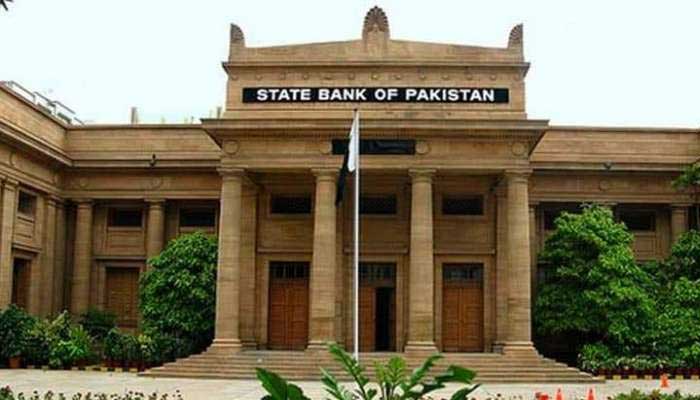PSEs’ borrowing climbs 82 percent to Rs303bln in nine months
KARACHI: Public sector enterprises borrowed Rs303.2 billion from banks in the first nine months of the current fiscal year of 2018/19, up staggering around 82 percent over the corresponding period a year earlier, as revenue-expenditures gap whetted their liquidity appetite during the period.
The State Bank of Pakistan’s (SBP) data on Friday showed that public sector enterprises obtained Rs166.8 billion in bank loans between July 1, 2017 and April 5, 2018.
Analysts said constant upsurge in demand for bank loans by the public sector enterprises reflected the government’s failure in turning the loss-making firms profitable. Pakistan International Airlines Corporation, Water and Power Development Authority, Pakistan Steel Mills Corporation continue to incur huge financial losses and are fed on dole-outs from exchequer.
They said the companies are eating into bulk of the budgetary resources. Public sector firms’ borrowings increase cost of debt servicing amid monetary tightening. The central bank has pushed up interest rate by 500 basis points to 10.75 percent since January last year.
The International Monetary Fund (IMF) projected Pakistan’s fiscal deficit to reach eight percent and debt-to-GDP ratio to touch 86 percent over the next five years. In its latest fiscal monitor report, the IMF forecast fiscal deficit at 7.2 percent in 2018/19, 8.7 percent in FY2020, eight percent in FY2021, 7.8 percent in FY2022, 7.6 percent in FY2023 and 7.7 percent in FY2024.
Analysts believed that bank lending to the public sector enterprises is expected to scale down as the government plans to privatise 48 state-owned enterprises over the next five years. IMF with which Pakistan is currently in talks for financial support also advocates divestment from state-owned enterprises.
The SBP said banks’ exposure to energy sector has registered a ‘striking’ increase since FY2017. “Scheduled banks have been comfortable disbursing loans to the sector, as energy sector loans are generally considered to have low credit risk since most of these are government guaranteed,” the SBP said in its second quarterly report. “During the last decade, domestic banks’ exposure to the energy sector has steadily increased. Advances to the energy sector, which accounted for only 4.8 percent of total advances of the banking system at end-December 2007, jumped to around 17 percent by end-December 2018.”
The central bank said the outstanding loans of the energy sector have surpassed banks’ combined exposure to major manufacturing concerns, such as textile, chemical, automobile and cement.
The country has experienced a noticeable increase in energy generation, distribution and transmission capacities in both power and gas sectors, but the government couldn’t manage to maintain revenue streams from electricity to grid.
Energy sector’s circular debt surpassed one trillion rupees, though the last government brought it down to zero after assuming the power. The present government has recently issued sukuks worth Rs200 billion to settle growing circular debt.
-
 Why Claude Is Gaining Momentum In Revolutionizing The AI Landscape
Why Claude Is Gaining Momentum In Revolutionizing The AI Landscape -
 Cheaper Cars, Fewer EVs: Trump Administration Shifts ‘auto Policy’ Focus
Cheaper Cars, Fewer EVs: Trump Administration Shifts ‘auto Policy’ Focus -
 Meghan Markle Takes 'breadwinner' Role In Prince Harry's California Life
Meghan Markle Takes 'breadwinner' Role In Prince Harry's California Life -
 Type 2 Diabetes Hidden Trigger In Daily Food Revealed
Type 2 Diabetes Hidden Trigger In Daily Food Revealed -
 Vertical Tabs Coming To Google Chrome
Vertical Tabs Coming To Google Chrome -
 Jane Seymour Reveals THIS Beloved Romance Was 'worst-reviewed' Movie Ever
Jane Seymour Reveals THIS Beloved Romance Was 'worst-reviewed' Movie Ever -
 European Leaders Slam Trump’s Tariff Threat Over Greenland As ‘unacceptable’
European Leaders Slam Trump’s Tariff Threat Over Greenland As ‘unacceptable’ -
 Princess Eugenie Leaves Father Andrew 'devastated' With Big Step: 't's Brooklyn Beckham Level'
Princess Eugenie Leaves Father Andrew 'devastated' With Big Step: 't's Brooklyn Beckham Level' -
 Nova Scotia Snow Storm Warning Issued As Heavy Snow Moves In
Nova Scotia Snow Storm Warning Issued As Heavy Snow Moves In -
 Vancouver Canucks 2025-26 Season: Adam Foote’s Future Under Early Scrutiny
Vancouver Canucks 2025-26 Season: Adam Foote’s Future Under Early Scrutiny -
 Gabriel Diallo Vs Alexander Zverev: Rising Canadian Eyes Major Upset Opportunity
Gabriel Diallo Vs Alexander Zverev: Rising Canadian Eyes Major Upset Opportunity -
 Bo Nix Injury Update: Broncos Quarterback Fractures Ankle Against Bills
Bo Nix Injury Update: Broncos Quarterback Fractures Ankle Against Bills -
 Oilers Vs Canucks: Why Edmonton Is Without Leon Draisaitl
Oilers Vs Canucks: Why Edmonton Is Without Leon Draisaitl -
 49ers Crushed As Kenneth Walker III Leads Seahawks To 41-6 Win
49ers Crushed As Kenneth Walker III Leads Seahawks To 41-6 Win -
 Canadiens Star Lane Hutson Makes History With 100th NHL Assist
Canadiens Star Lane Hutson Makes History With 100th NHL Assist -
 Bridgerton’s Claudia Jessie Says Her Real-life Style Is Nothing Like Eloise’s
Bridgerton’s Claudia Jessie Says Her Real-life Style Is Nothing Like Eloise’s




